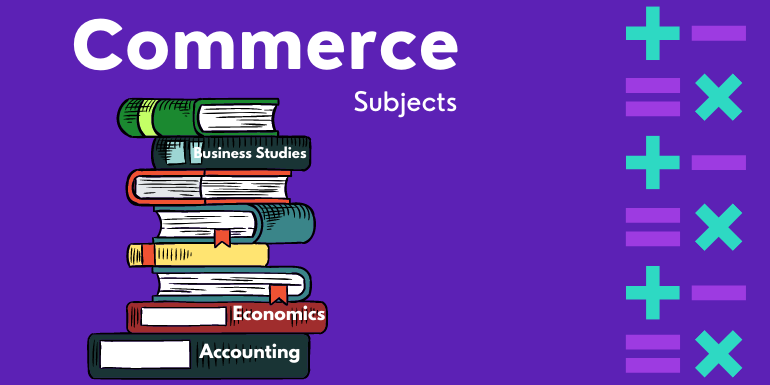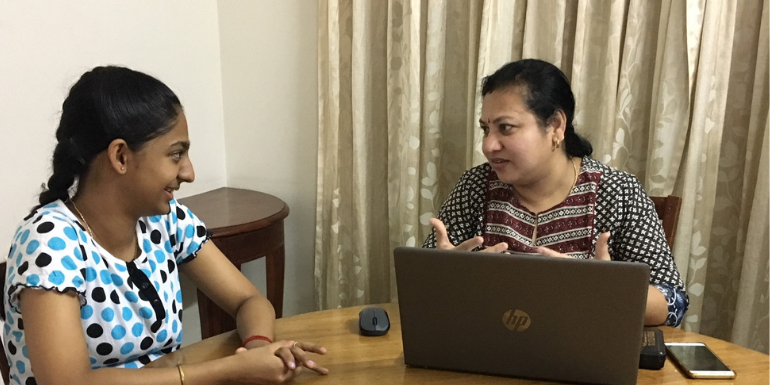How would you envision your child’s education? Are you a traditionalist who aims to see their offspring learn the fundamentals of education first and then utilise the knowledge in the real world or are you a modernist who finds fault in this system of learning?
For decades, there has been an oceanic difference between education systems abroad and in India. While those abroad tend to drift toward activity-based learning in addition to a traditional format, India seems to focus intently on the fundamentals of education.
This has left many parents and students disgruntled with the knowledge gap once they dip their feet into the job market. In this blog, we shall look at how the existing education system benefits students but also we will focus on its drawbacks and put forth five emerging trends in the Indian Education sector in 2024 and beyond.
What is the existing state of the Indian education system?
The Indian, primary, secondary and higher education system in 2024 strives to be a leader in the global market. With India growing tenfold every day as an economic powerhouse, more youngsters are getting the opportunity to receive a quality education. However, a structure based on a historically traditional structure has left many facing hurdles in their lives. Drop-out rates are high. How can this be overcome? First, let us look at the positives of the Indian education system before we delve into how the challenges faced by students are being addressed by the government.
Positives of the Current Indian Education System
Multilingual Diversity: Straight off the bat, one can witness the incredible linguistic knowledge and diversity a common Indian possesses through education. Hindi, English and their mother tongue(Tamil, Kannada etc.) are not out of reach and handling people from different states is a common scene to witness in the country. The Indian education sector focuses on a multilingual education methodology that strives to teach practical skills without letting go of teaching ancient languages like Sanskrit in their curriculum.
Supporting Cultural Diversity: Schools and universities often have students from different cultural backgrounds mingling with one another. The diversity can be witnessed in the acknowledgement of history and heritage and teachings offered by schools about various cultural figures from different states and countries.
Introduction of Technology: Computers were present in schools in the early 2000s to showcase the increasing benefits technology offered to teaching and learning. With the rise of ed-tech platforms like edumilestones, ByJu’s etc. schools are integrating technology into their teaching methodologies to keep students up-to-date with the progress being made in the modern world as well as acclimatise them with the practical objects and systems used in the job market when they seek a future career.
A Hybrid Model of Subject-based and Conceptual Training: Following a subject-based approach with frequent examinations to test the student is still the norm. However, in modern times schools are increasingly shifting to a conceptual approach that emphasises practical training. Be it field trips for lower KG students or clubs and societies in schools that offer students the opportunity to work on projects in a practical environment, the tide is changing to much support from parents and children alike.
Drawbacks of the Current Education System:
A Funding Issue: With over 300 million children in the country, schools and colleges need to be funded properly to provide equal and fair education to everyone. Rural regions need to be better equipped with infrastructure, quality teachers and funded well to ensure students from impoverished families are allowed to succeed in a fair environment.
Quality of Education: There is a huge gap in resources, infrastructure and ultimately quality of education in rural and urban areas. Teachers are often underqualified and a general lack of discipline in monitoring the progress of students leads to high dropout rates and incompletion of courses in schools and universities.
Gender Issues: Despite India’s progress, girls still have a hard time educating themselves let alone working a full-time career. This is especially evident in rural regions where the patriarchal and hegemonic culture prevalent reduces a girl child to a mere spectator in a household where housework is valued more than a child’s education. This gender disparity has left only 1/3rd of the country’s population literate.
Innovation and funding through PPP: A public-private partnership(PPP) can foster high levels of innovation in schools such as setting career labs and practical use-cases that allow students to gain hands-on experience. However, many schools are still under the government and even private schools lack a PPP leading to stagnancy in learning for students.
How is the Indian Education Board Changing the Landscape?
A host of education schemes have been introduced since the early 1960s to combat the issue of stagnancy in learning including the Sarva Shiksha Abhiyan( to promote ‘Education for All’ ), the National Programme for Education of Girls at the Elementary Level ( to provide mandatory education for girls from impoverished families), Mid Day Meal Scheme( to provide mid-day meals to government school children ), Rashtriya Madhyamik Shiksha Abhiyan( to improve secondary education ), Scheme for Infrastructure Development in Minority Institutes( to improve infrastructure for minority communities ) and Beti Bachao Beti Padhao( to promote girl child education ).
The NEP(National Education Policy) in India also has been drafted and modified as recently as 2020 to improve the standards of education in the country.
Five Emerging Trends in the Indian Education System
-
Focusing on Skill Development and Contextual Learning
Reskilling and Upskilling are the words of the day. The World Economic Forum put forward the ‘Reskilling Revolution’ in 2021 to benefit more than 350 million students worldwide. India with a vast population of young children is in dire need of a skill-based learning system. The benefits of such a learning methodology are vast. By fuelling the spirit of entrepreneurship, children can learn practical use cases and earn hands-on experience. The dearth of talent with real-world experience is a dire issue for industries worldwide. Indian children can learn to succeed in the job market by reskilling and upskilling themselves in school.
Contextual learning can help create an idea of niche subject knowledge for students. By providing career-specific subjects as and per the student’s preferences and thus providing a personalised approach, schools can enable students to get educated in niche subject matter that helps them in the future. We can expect courses such as ‘entrepreneurial leadership’, and ‘sustainability practices’ to be taught in schools in 2024. In addition, schools could offer career guidance and career counselling in their curriculum. This will enable students to get a grasp on important topics that will aid their future.
2. Sustainability - Green Education
There will be an increased focus on green education in India. The whole sustainability and green-initiative issue has blown up these past few years but India is still lagging in terms of providing green education. What is green education? Simply put, it is moving beyond the textbooks and the classrooms and encouraging students to do things that help the environment.
This could be encouraging students to start a ‘Be-Clean’ initiative and take to the roads to promote cleanliness or it could be as simple as planting trees in the city and rural areas. Green Education is an environmental extra-curricular activity that aims to foster the knowledge of sustainability practices in young children.
One can expect courses on climate change and renewable energy to be taught. With companies becoming increasingly environment-conscious, there is a need for employees to be sustainability-minded as well and the Indian education system will reflect the need by aiming to create a diaspora of socially-inclined students.
3. The Rise of Ed-Tech Platforms
Have you ever imagined a scenario where a school teacher showcases a famous historic monument through Google Earth to offer close-up views of the Eiffel Tower or the Qutub Minar? Or what if a teacher uses a 3D printer to whip up a science project for their students? This is the rise of the ed-tech platform in Indian schools.
Currently, some ed-tech platforms help teachers by providing lessons, assessments and classroom material. Helping the teachers transmit their teachings via the help of the digital platform is the benefit of using ed-tech platforms.
This allows teachers to teach in a flexible mode( teachers can opt for online teaching ), extra material to study ( Ed-Tech platforms will provide extra study material for students ), and enhanced infrastructure ( Students are provided with technological infrastructure ).
As per IBEF, the Indian ed-tech industry was valued at $750 million in 2020 and is projected to be valued at $4 billion by 2025 by growing at a CAGR of 39.77%.
4. Mental Health Awareness
How mindful is a student? That is the question to ask when faced with an increasing diaspora of students who are faced with exam stress and mental health troubles. This is a tough topic to discuss. How many young lives are lost due to mental health troubles and exam-related stress?
It is thus paramount for teachers, the education board and students to consider mental health as a subject. Many schools abroad already offer this and India can turn its young children into mindful, resilient and strong-willed individuals who take the job market by storm when they enter it.
Mental Health courses, workshops and seminars could be offered. There might be subjects on mental well-being, mindfulness and resilience being offered in schools. This will help students gain clarity and self-awareness and increase their overall mental and emotional health. subjects will prop up in the future that deal with the students’ mental, physical and emotional health. The Indian system is also looking to overhaul its policy about examinations and the introduction of mental health subjects will aid to the growing concern of students’ wellbeing.
5. Global Partnerships
This could be the year we see IIT set up an institute abroad. Just having Indian on the brand name is a proud achievement for the country if they do it. This is where global partnerships could be important in 2024. Not only will colleges in India be allowed to set up branches worldwide but as with the private business sector, foreign colleges, universities and even schools can be allowed to do the same in India.
This will foster innovation and brand development for Indian education that could enable it to stand at the forefront of education in the global market. This will equip students to learn subjects and topics related to the job market and enable them to develop the skill set to transition seamlessly from university to work. We could see foreign exchange programs and an increased focus on research and entrepreneurial hand-holding from universities for students. Students could set up their businesses in college.
This partnership will strengthen India’s stand in the world as an education powerhouse and help in acclimatising students to different surroundings
The future looks bright for Indian education. These five emerging trends in the Indian education sector arent the only ones but they certainly are the points that will bring India into becoming a future leader of the global education market. The main focus of the Indian education board is to build resilience and job-market-ready students who are trained well in practical, contextual and real-life use cases. There is also a focus on sustainability, technology and mental health awareness. This is just the start and we can expect 2024 to be a stalwart year for India as an education powerhouse.















